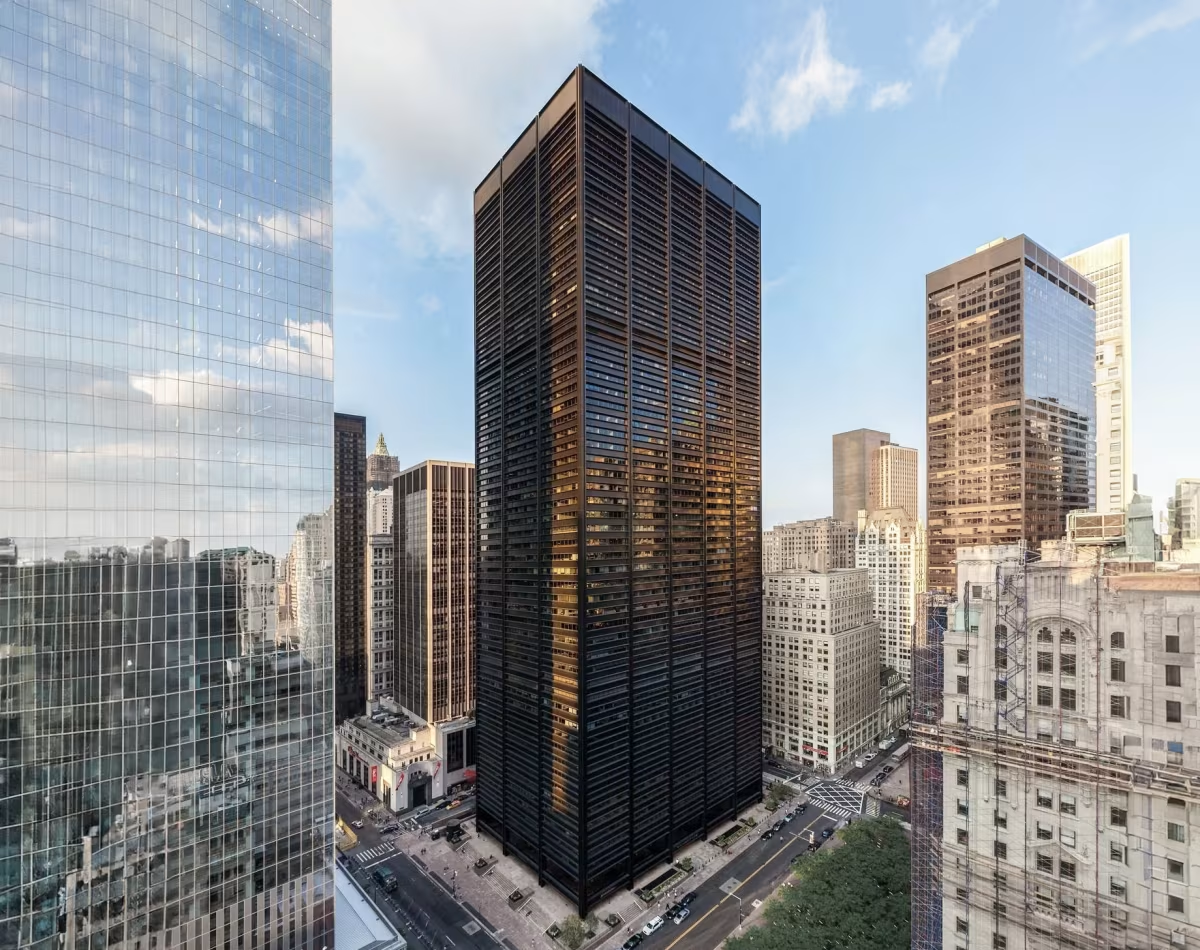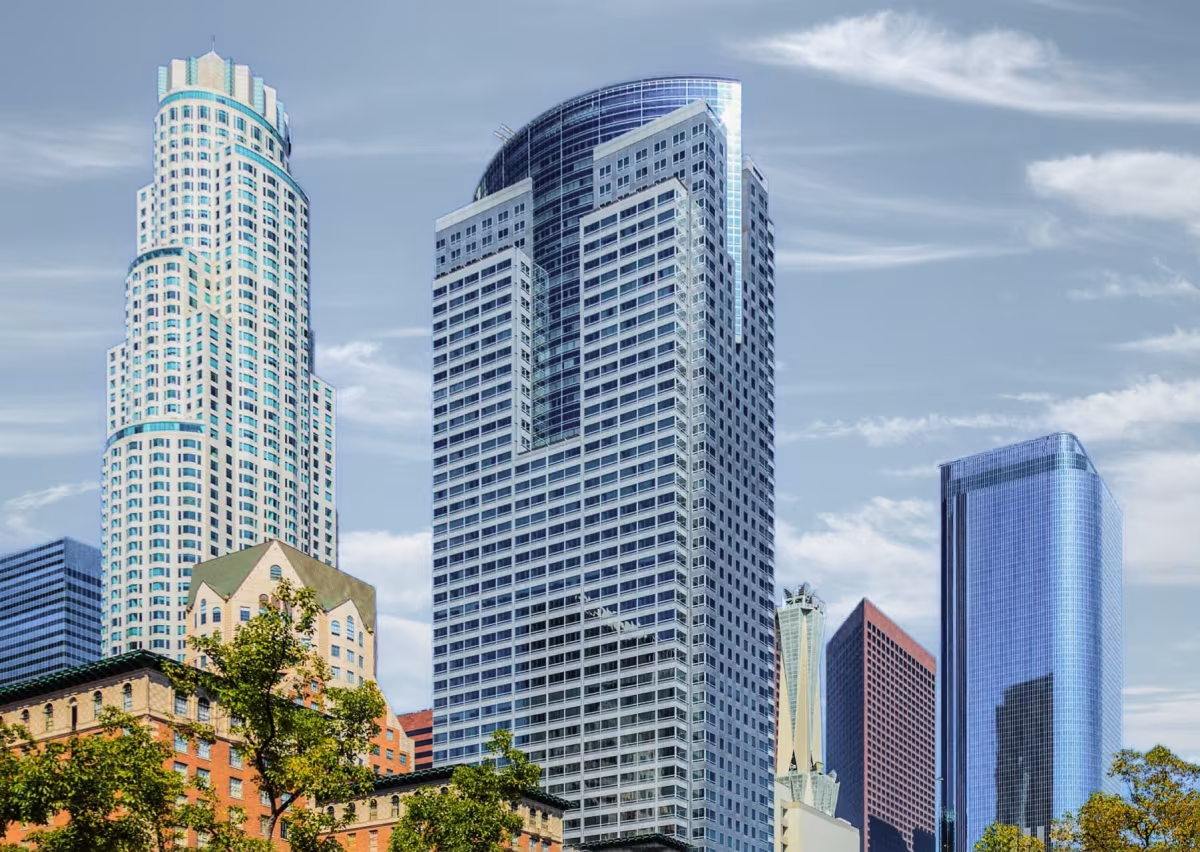One Liberty Plaza Building vs Gas Company Tower


Comparing the One Liberty Plaza Building and the Gas Company Tower is compelling because they were both designed by Skidmore, Owings & Merrill, yet they stand in different cities (New York, NY and Los Angeles, CA), and were completed a decade apart.
What this will allow us to see, is how the same firm's approach adapted to different places in different periods of time.
Height & Size
These two towers present an interesting contrast in their proportions. The Gas Company Tower rises higher at 748ft (228m), while the One Liberty Plaza Building reaches 741ft (226m). However, the One Liberty Plaza Building accommodates more floors with 54 levels above ground, compared to 52 floors in the Gas Company Tower.
This suggests different approaches to interior space design. The Gas Company Tower has an average floor-to-floor height of approximately 4.4m, while the One Liberty Plaza Building has more compact floors averaging around 4.2m each.
These different proportions likely reflect the specific needs each building was designed to serve, whether driven by zoning regulations, client requirements, or the intended use of the spaces within. The contrast shows how architects can achieve different spatial experiences even when working with similar overall building scales.
Architectural Style
The One Liberty Plaza Building was designed in the International Style style, while the Gas Company Tower reflects the principles of Postmodernism.
Both towers were built when their respective styles were already past their prime. This makes them feel more like late continuations rather than groundbreaking statements, showing how architectural traditions can linger even as tastes shift.Uses
Both the One Liberty Plaza Building and the Gas Company Tower were designed to serve as commercial towers, and that has remained their main use since their completion, serving similar roles in the urban fabric.
Structure & Facade
Both the One Liberty Plaza Building and the Gas Company Tower rely on a Frame structural system.
A frame structure uses a grid of columns and beams to carry the building's loads. This frees the walls from structural duties, allowing for flexible floor plans and larger windows.
They also employ the same type of facade, a Curtain Wall facade.
A curtain wall is a non-load-bearing facade hung from the structural frame. It is anchored to floor slabs and transfers only its own weight and wind loads, allowing for sleek, glassy exteriors.
| One Liberty Plaza Building | Gas Company Tower | |
|---|---|---|
| Skidmore, Owings & Merrill | Architect | Skidmore, Owings & Merrill |
| 1969 | Construction Started | 1988 |
| 1972 | Year Completed | 1991 |
| International Style | Architectural Style | Postmodernism |
| Commercial | Current Use | Commercial |
| 54 | Floors Above Ground | 52 |
| 3 | Floors Below Ground | 8 |
| 226 m | Height (m) | 228 m |
| 213,676 m² | Usable Area (m²) | 133,026 m² |
| 39 | Number of Elevators | 28 |
| Frame | Structure Type | Frame |
| Steel | Vertical Structure Material | Steel |
| Concrete And Steel | Horizontal Structure Material | Concrete |
| Yes | Facade Structural? | No |
| Glass, Steel | Main Facade Material | Glass, Steel |
| Turner Construction Company | Main Contractor | Turner Construction |
| U.S. Steel Corporation | Developer | Thomas Properties Group |
| NY | State | CA |
| New York | City | Los Angeles |
| 165 Broadway | Address | 555 West 5th Street |